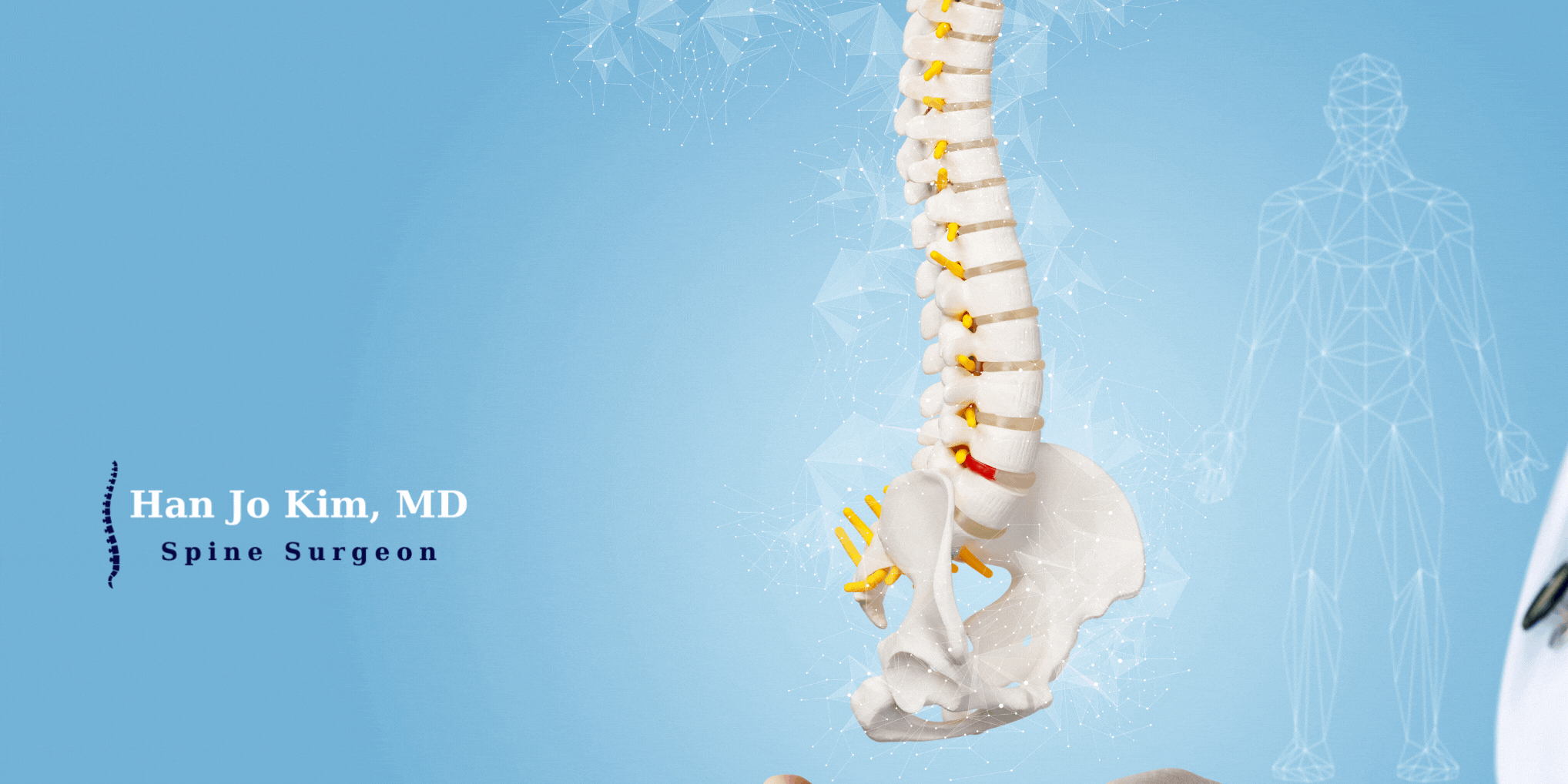About Han Jo Kim, MD: Spine Doctor Connecticut

While working as a spine surgeon at the Hospital for Special Surgery (HSS), Dr. Kim, spine doctor Connecticut, mastered his craft. Specializing in cervical spine and scoliosis surgery, he has helped patients overcome spinal issues and injuries through surgery for many years. After serving as the Director of the Spine Fellowship, Dr. Kim has become the leader and founder of our practice.
Dr. Kim’s time as a spinal surgeon has not fallen exclusively within the United States. He has dedicated time to work as a volunteer surgeon at the FOCUS hospital in Ghana, West Africa. Doing so allowed him to treat some of the rarest and most complex spinal conditions in pediatric and adult patients. Those who find themselves dealing with extremely rare or severe spinal conditions should feel confident coming to our practice for care. Dr. Kim has successfully operated on hundreds of rare and complex spinal deformities and takes this valuable experience into every operation he performs.
Our practice understands how devastating spinal issues can become. We also know that the nature of spinal surgery is extremely invasive. We want our patients to trust that spinal surgery will only be recommended when all of the treatment options have been exhausted. Dr. Kim and the rest of our staff’s primary goal is to get each patient who visits us back to full strength. When surgery is required for this goal, there are few better teams to work with than the one here at Dr. Han Jo Kim’s office.
Scoliosis is a spinal ailment that commonly manifests in a child during growth spurts that happen just before puberty. Despite not posing a serious health risk, this illness can lead to several adverse outcomes if neglected. Surgery will be necessary for extreme circumstances to restore the patient’s health. When scoliosis surgery is required, the actions that must be taken to finish this process must come through consultation with a doctor. Dr. Han Jo Kim, spine doctor Connecticut, is an expert spine surgeon in Connecticut who specializes in scoliosis treatment, and he explores, if and how scoliosis can be corrected because he wants the best for you!
What Exactly Is Scoliosis?

Scoliosis is a complicated condition that involves several simultaneous problems. Scoliosis causes a 3-dimensional change in the spine, most notably generating a curvature to one side or the other, but it also frequently results in the spine’s rotation. A normal spine will seem straight when viewed from behind. The spine of someone with scoliosis may appear to curve in a C or S form from the back. Scoliosis gradually throws off the body’s equilibrium, resulting in muscular imbalances, postural disorders, and difficulty with range of motion. Scoliosis can be difficult to detect, especially in the early stages. Usually, the condition has advanced for some time before any visible symptoms arise. Visible symptoms of scoliosis may include but are not limited to:
- Uneven shoulders.
- One shoulder blade appears more prominent than the other.
- Uneven waist.
- One hip is situated higher than the other.
Scoliosis is a condition that most commonly manifests itself when an adolescent approaches puberty. The ideal time to monitor and treat this problem is while the patient is still a child. Even if a child has a mild instance of pediatric scoliosis, it can swiftly worsen into a much more serious issue if left untreated. Over time without adequate treatment, the spinal curvature could worsen, and make adolescence and adulthood unnecessarily difficult.
Not all scoliosis cases are discovered when a person is still a child. Scoliosis that manifests or is discovered after this time is adult scoliosis. It happens after the spine has fully grown. The most typical reason for adult scoliosis development involves spinal degeneration where damage to the structure’s integrity leads to spinal curvatures. Even though there are few life-changing symptoms associated with adult scoliosis and treatment isn’t required in all cases, surgery may occasionally be advised. Surgery may be an option for adult scoliosis patients suffering with:
- Leg aches, numbness, or weakness.
- Decrease in height.
- Pelvis or hip alignment that is uneven.
- Chronic back pain.
Treatment For Scoliosis:
Bracing is the main method of treatment and management for scoliosis. To encourage the right spinal growth pattern, patients wear a back brace that locks their posture into a position optimal for appropriate growth. However, for some individuals bracing does not work to stop the development of a severe form of scoliosis. In this situation, doctors like Dr. Han Jo Kim, spine doctor Connecticut, will most likely advise having surgery.
There are generally three categories of surgery to treat Scoliosis:
- Fusion-free: placing screws on the outside of the spine and connecting them with a cord, then tightening the cord to straighten the entire structure.
- Fusion: the process of joining two or more vertebrae at the spinal joint, which prevents or reduces spinal curvature.
- Growing systems: anchoring surgical rods to the spine to control the direction of proper spine growth.
A doctor will assess the proper procedure for you and your specific case.
The Bottom-Line
If identified early enough, the scoliotic curve can be corrected utilizing techniques such as contemporary active bracing. Muscle imbalances can be addressed with the right physical treatment techniques, such as exercise designed specifically for scoliosis. In the short term, alternative therapies like massage may help with scoliosis pain; however, data suggest that longer-term pain management strategies like bracing may also be effective.
Since the underlying issue cannot be treated, continual treatment is necessary to prevent scoliosis from recurring. Scoliosis symptoms can therefore be treated in several ways. The advancement of scoliosis normally stops once a patient reaches skeletal maturity, and any further development can be stopped with the right exercises. So while many of the symptoms of Scoliosis can be managed to the point where it appears to no longer be an issue, the underlying cause can never be fully cured.
Contact Han Jo Kim, MD, Spine Surgeon: Spine Doctor Connecticut!
Scoliosis doesn’t have to control your life and dictate what you can or can’t do! Han Jo Kim, MD, has worked with many people who have scoliosis and provide care to help them live their lives to the fullest. Contact expert Dr. Han Jo Kim, Spine Surgeon, for scoliosis treatment plan options today!
Many people may not realize this, but scoliosis can worsen as you age. This is because the bones in your spine may slowly start to fuse as you get older. When this happens, it can limit the amount of movement you have in your spine, which can lead to a worsening of your scoliosis symptoms. If you have scoliosis and are getting older, it is crucial to be aware of this possibility and prevent it from happening. If you or anyone you know is struggling with spinal-related issues, please look no further than our spine doctor Connecticut, Dr. Han Jo Kim.
Spine Doctor Connecticut
At our spine doctor Connecticut, we are well equipped to take on the toughest cases of scoliosis and other spinal-related impairments and diseases. Scoliosis is defined as a slight curve of the spine that can lead to poor posture, uneven shoulders, uneven waist, one hip elevated higher than the other, one side of the rib cage in a different position than the other, and other related issues. This disease affects about 3% of adolescents. Most cases are relatively mild and don’t require more than a few basic home exercises to combat it. However, even in mild cases, they need to be heavily monitored and dealt with properly, or else they will most likely evolve into a big problem later on in life. In some cases, if left untreated, scoliosis can lead to respiratory issues and permanent back problems in worst-case scenarios.
If your scoliosis reaches the point where you need spinal surgery, our spine doctor Connecticut, Dr. Han Jo Kim treats all spinal surgery types, including spinal fusion, spinal tethering, growing rod placements, or spinal osteotomies. Sometimes scoliosis can manifest itself after the patient is a grown adult and their spine is completely developed. This is what’s called “adult scoliosis.” Adult scoliosis isn’t necessarily an utterly life-altering illness like adolescents with impairment. Many cases do not require surgery; however, if any of the following symptoms occur or persist, you should reach out to us and talk about potential surgery. These symptoms include leg pain, tingling or numbness, loss of height, uneven alignment of the hips or pelvis, and constant back pain.
Types of Scoliosis Surgery
Our spine doctor Connecticut specializes in all types of surgery for the disease. Dr. Han Jo Kim can perform three main types of scoliosis surgery. These include fusion, growing systems, and fusionless:
- Fusion Surgery involves fusing two or more vertebrae, thus stopping the spinal curve.
- Growing Systems – consist of anchoring surgical rods to the spine, which will prevent the spine from curving during growth. This surgery is specifically for the younger patients going through the illness.
- Fusionless Surgery – involves placing screws on the spines’ outer sides and pulling them with a chord to straighten the structure.
Managing Scoliosis
If you are already experiencing the symptoms of worsening scoliosis, there are a few things that you can do to help manage them. One thing you can do to help prevent the worsening of your scoliosis is to stay active. Exercise is a great way to keep your spine flexible and healthy, and it can help prevent the bones from fusing. You don’t need to spend hours in the gym every day – just a few minutes of exercise each day can make a big difference.
Another thing that you can do is to maintain a healthy weight. Obesity is known to be a risk factor for worsening scoliosis, so it is important to keep your weight under control. Scoliosis can be difficult to live with, but it is important to remember that you are not alone. There are plenty of people who understand what you are going through, and there are plenty of resources available to help you manage. If you’re looking for spine doctor Connecticut, look no further than our very own Dr. Han Jo Kim today!
Visit Our Spine Doctor Connecticut Today!
If you are currently experiencing any of the back and spinal issues mentioned above or have any other questions about our other services, please go to our website at Dr. Han Jo Kim. If you have scoliosis and are getting older, it is important to be aware of this possibility and take steps to prevent it from happening. If you or anyone you know is struggling with spinal-related issues, please look no further than our spine doctor Connecticut, Dr. Han Jo Kim. Schedule an appointment today with our orthopedic spine specialists!

Scoliosis is a condition that causes your spine to curve sideways, and it has no known cure. While typically not severe enough to require surgery, it can be difficult for sufferers to live with – which is why many people wonder if stretching can help scoliosis. If you have scoliosis, contact Dr. Han Jo Kim for a spine doctor Connecticut today!
It is important for people living with scoliosis to take special care when exercising their spine since it has already been damaged in some way by the condition. Exercise can exacerbate or even cause pain in people with this condition, so stretching exercises should be done cautiously and not pushed too far.
In these exercises, patients are taught to stretch and strengthen muscles. In some cases, the patient’s spine is also stretched to help it grow straighter, but this increases the risk of damaging your spine and discs. The exercises that do not stretch the spine tend to be exercised like Pilates and yoga, focusing on strengthening muscles.
Spine Doctor Connecticut
However, there are other factors to consider beyond whether or not stretching can help scoliosis specifically, and it’s important if you’re thinking about doing exercises like these to consult a doctor first. They will be able to advise you on what kind of stretches would be safest for your specific case and will also be able to tell you if your scoliosis is severe enough for surgery.
Stretching helps patients with scoliosis build strength and endurance in their muscles without putting too much pressure on their spine. Stretching is a great way to help strengthen muscles and make them more flexible, but it’s important to do so carefully! If you’re concerned about scoliosis and want to know more, contact Dr. Han Jo Kim, spine doctor Connecticut, today!
Exercises For Scoliosis
There is a range of different exercises for scoliosis. Some common exercises include:
- Stretching – Stretching makes muscles more flexible and can be an important part of treatment. The best stretches for scoliosis will aim to stretch the spine itself rather than any other parts of the body.
- Strengthening – this is a way of making muscles stronger. Stronger muscles will help support the spine and can reduce pain and the severity of symptoms.
- Balance exercises – balance exercises train the brain to maintain good posture and use the muscles in your body more effectively. They can be essential for reducing the risk of falls and minimizing ongoing symptoms.
- Spinal manipulation – spinal manipulation is when a medical professional uses their hands or an instrument to adjust the spine manually. This can be used as part of the treatment for scoliosis. It depends on the severity of symptoms at diagnosis, your physiotherapist or doctor in conjunction with other types of exercise.
What Can We Do To Strengthen Our Core?
There is a range of different exercises that can be done to strengthen the core muscles. Here are a few examples:
- Crunches – This is a great exercise for strengthening your abdominal muscles and can also help with good posture!
- Plank – while it’s important not to hold one position for too long, planks can help build endurance in your core muscles and help with good posture.
- Side planks are a great strengthening exercise for your obliques (your side muscles), used in everyday tasks like standing up or getting out of bed. If you’re struggling, try putting one leg up on a chair or table for support.
- Push-ups – push-ups are an excellent way to strengthen your chest muscles, which of course, are used every time you stand up straight! They can also help with good posture.
- Leg lifts are also great for strengthening the muscles of your abdomen, which are used in many daily activities.
- Swimming is a great exercise for people with scoliosis. SInbecause it’s low impact and can be done with minimal risk of harming or exacerbating the back. It also means you don’t have to put too much pressure on your spine!
- Squats – Squats are another way to build strength in your legs and core. Aim to do at least ten squats every day to feel the benefits!
Han Jo Kim – Spine Doctor Connecticut
Therefore, exercises are a great way to build strength in your muscles, which can help with symptoms of scoliosis. Stretching is also important for scoliosis patients because it helps strengthen the muscles around the spine without putting too much pressure on them. If you would like more information about the best exercises for your particular case of scoliosis, contact Dr. Han Jo Kim for a spine doctor Connecticut today!


